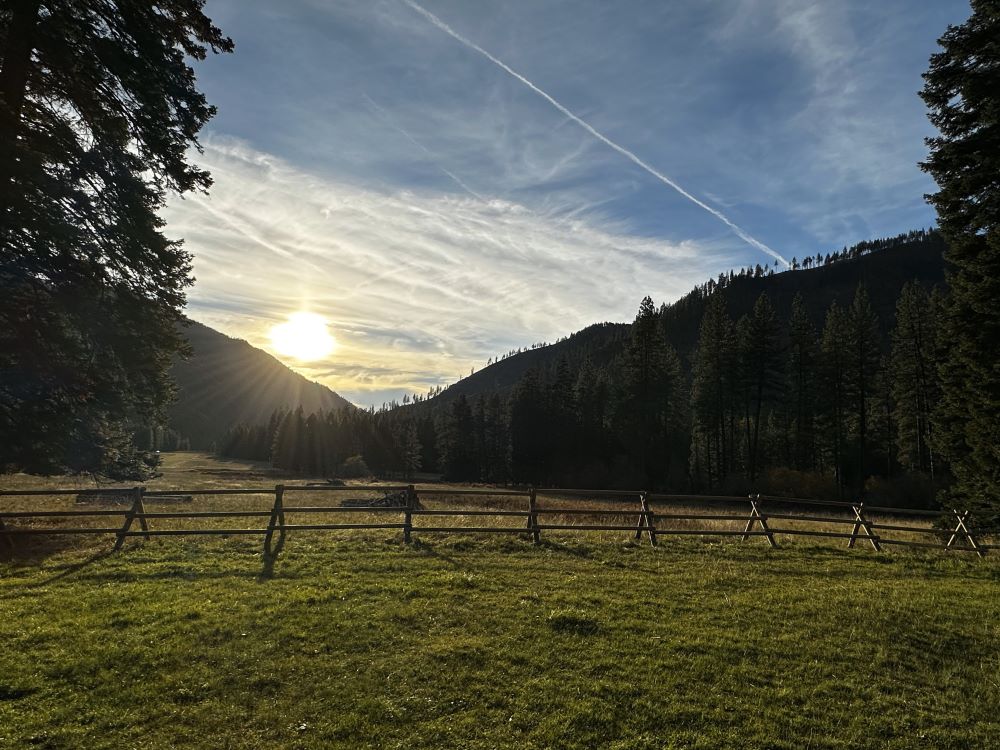LET’S BE CAREFUL OUT THERE

The number of backcountry accidents (13 in Idaho so far), a fatality, and near disaster at Smiley Creek has put all the pilot organizations on high alert this summer. The RAF has been a charter member of the AOPA – Air Safety Institute led Backcountry Safety Coalition since it began, and we are all feeling a full court press is necessary to hopefully get pilots’ attention. As RAF Chairman John McKenna notes, “Many don’t need to be taught, but rather, need to be reminded.” So here are a few things to consider when getting ready to fly into the backcountry this season.
The airlines have standardized a process known as “Threat and Error Management”. This is a “look forward” technique to brief not only the details of an approach and landing, but also a prediction of what could go wrong. Considering some of the accidents and near misses this year. Here are some practices that should help to better prepare you for your backcountry flight.
– What would I do if the pattern is full when I arrive? Overfly the pattern at 1000 ft above pattern altitude to assess the situation. Get traffic in sight and only join the pattern when it’s safe.
– Pick an abort point and stick to it. Overfly the field and choose an abort point that you are 100% confident would safely get you out of a bad approach. Once you choose it – use it! Don’t try to save a bad approach by applying all your superior airmanship skills. Just DO IT – go around.
– One fly-in, one portable. If you are organizing a fly-in, choose a capable pilot on the ground and have that person provide advisories to incoming aircraft. This isn’t an air traffic controller or air boss, but a person who can offer information about winds, runway conditions, and safety information, (e.g. “Winds are favoring runway 15 and there are a lot of airplanes in the pattern.”).
– Pull up your 10 mile out checklist. Ten miles out from the airstrip, run through a checklist of things you should do:
Are you on the CTAF for the airfield?
Have you made your position call for the airfield?
Are your lights on?
Have you briefed passengers you are getting ready to land?
Have you briefed for a sterile cockpit?
Eyes outside and no distractions.
Run your “threat and error” sequences – what if I’m too high, what if there are deer on the runway, what if someone is inbound on the wrong frequency, what if someone takes off, towards me while I’m on approach…?
– On the ground and tied down by noon. Many accidents in the backcountry happen in the afternoon. Anyone who has flown the backcountry knows the conditions in the afternoon can be dangerous – unpredictable gusty winds, thermals, downdrafts, thunderstorms, high temps, anemic performance due to density altitude, and unfortunately lower visibility in many places due to smoke. Enjoy the afternoon beneath the shade of your wing or nearby tree rather than in the air wishing you were on the ground.
And while you’re at it – be a good visitor to the backcountry and practice the RAF Code of Conduct. We can all do better and it’s never a waste of time to remind ourselves of how to safely fly the backcountry. Be safe and blue skies.
Submitted on July 19, 2024
by RAF President Bill McGlynn and RAF Chairman John McKenna

Thank you for the excellent reminders – I especially love “One fly-in, one portable.” I’ve seen some unnecessary chaos at casual grass strip and backcountry fly-ins that suddenly get busy. Many have vehicle access and are magnets for kids and dogs. A few years ago I was at a one-way strip where a visitor drove across midfield while an aircraft was on short final. They went around into uphill terrain, destroyed the plane and survived with serious injuries. To my knowledge no one on the ground was monitoring CTAF, briefing visitors or providing advisories.
Bill, I really like the suggestion of a “10 mile” check
list. Will make one up here shorty for use in the cockpit. Great article and hope all pilots will take it to heart!
Great list. Thanks for all you do towards improving backcountry safety.
Thanks for again bringing up these concerns and recommendations about flying during the summer – especially in the mountains.
It’s that old quote – “I’d rather be on the ground wishing I could be in the air, than in the air wishing I was on the ground!”.
Bill, excellent article. A good reminder for backcountry flying as well as fly-in’s. We have 5 fly-in’s a year at our home airport, 8ma4 Crow Island, Stow, MA. We will use all of the points covered in the article at our EAA up coming chapter meeting. The 10 mile out checklist is something that every pilot can review, no matter where we’re flying. Thanks for sharing!
SOP, including videos, for popular Idaho airstrips can be found here: https://itd.idaho.gov/aero/
Idaho accident “report card” here: https://itd.idaho.gov/wp-content/uploads/2018/04/IAASC_Report.pdf
Great thoughts, thank you. Big fly-ins can get busy very quickly and thus scary very quickly. Reminder that if there is going to be someone on the radio to offer observations (not an air boss), that they be mindful of relaying relevant and important information only. They should not act as a coordinator, that is the PIC’s job. Many planes in the pattern should be obvious to those listening to the frequency. Winds, runway, airplanes back taxiing, etc are all things that would be helpful observations. It’s up to us as PIC’s to read and be familiar with the SOP’s, even those of us that have flown into a strip many times…we’ve got to be careful of complacency! IAA, UBCP, and RAF all do a wonderful job of making the information about the strips available…let’s not discount it. Also, love the 10 mile out checklist!!
Basic skills please. We stacked one up in the Breaks this year even though most of those strips are open on each end and, as back country goes, easy to moderate. You simple must be able to put your wheels down on speed within a reasonable distance. If not…GO AROUND.
In Idaho, I have always had two immutable personal rules. 1. If the weather (wind included) is bad; Don’t go. 2. If the weather might be bad. Don’t go.
This is an excellent article….I’m going to work on the 10 mile check list. Thanks R
At many fly ins, for whatever reason, everyone seems to arrive at the same time with chaos ensuing in the air as well as the ground. Having someone on the ground giving traffic advisories as well as someone on the ground on a different freq coordinating parking would be a great help. Have been watching many youtube accident “unofficial observations” and exceeding critical angle of attack and density altitude issues seem to be a common thread as well as the universal flying into IMC. Distractions are deadly.